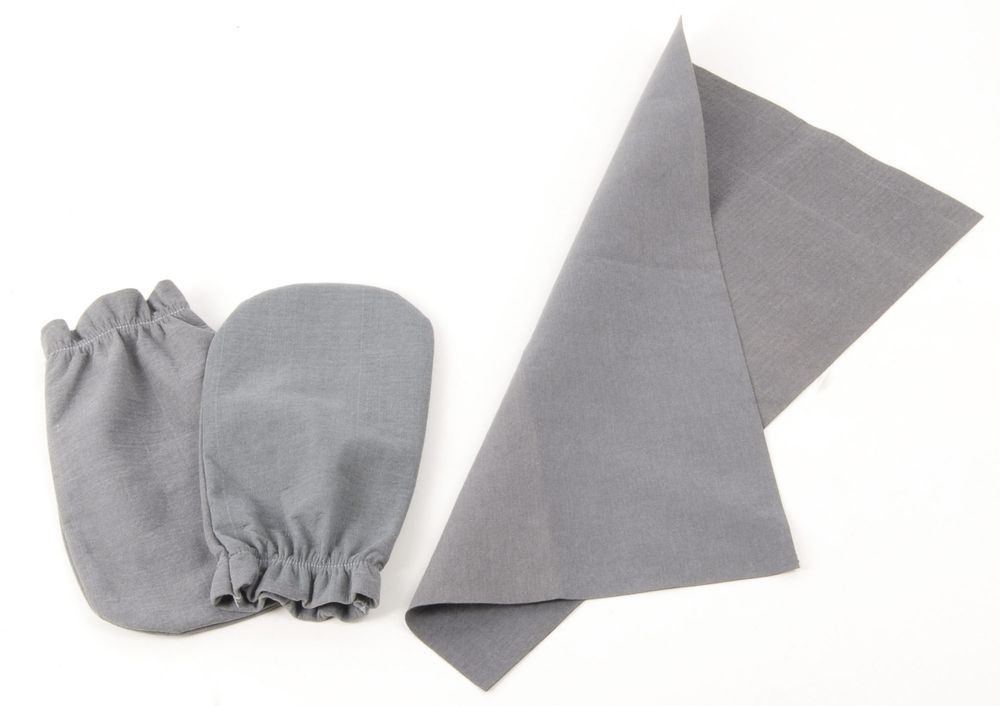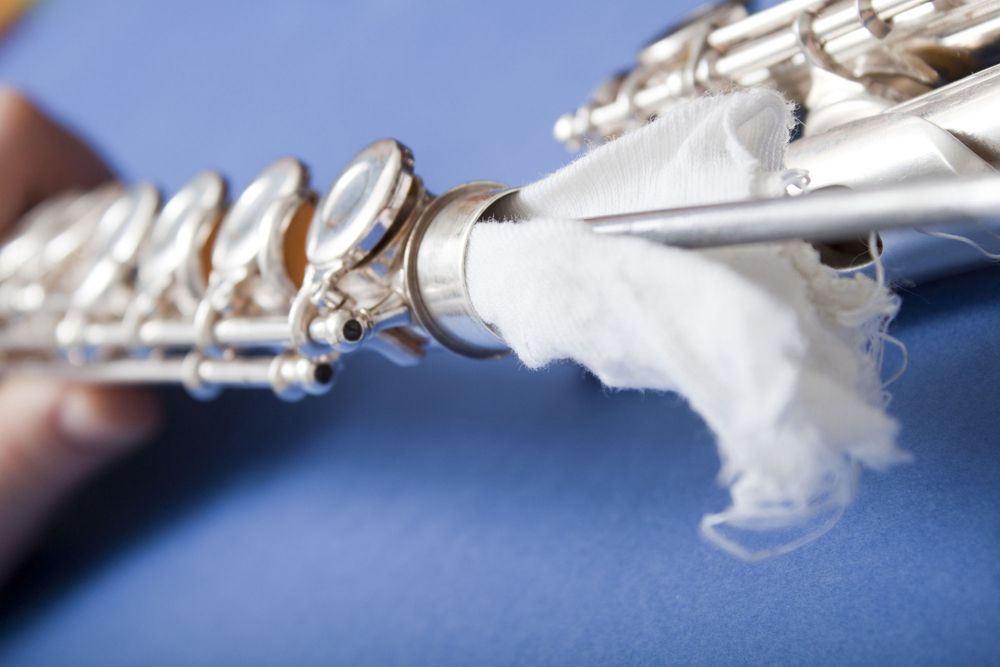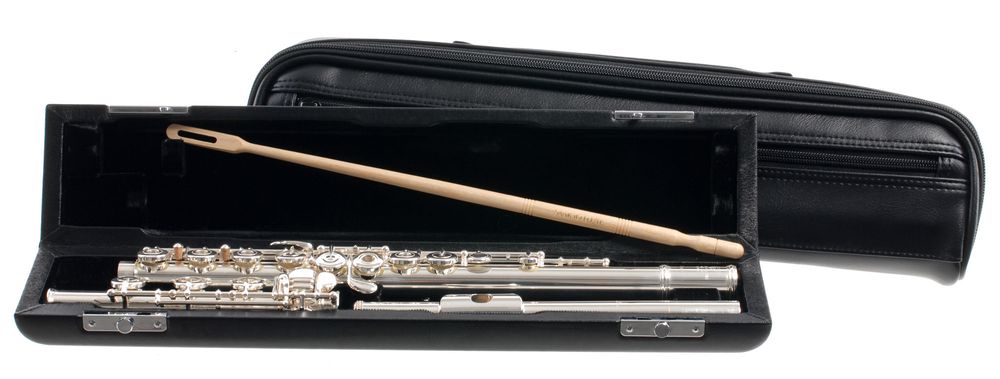12. Care and Accessories
The flute should be cleaned thoroughly inside (using a regular cloth) and outside (using a microfiber cloth) after each play. Especially silver flutes, but also lower gold alloys, tend to tarnish quickly, mainly due to any grease residues from the skin.

To do this, detach the head and foot joint exactly as you assembled them. Initially, place all three parts back into the case - this is the safest way to store them. Wrap a cotton cloth around the cleaning rod, ensuring the flute's inner side won't get scratched. Then take out the parts one by one from the case and clean them as follows:
- To dry the foot joint, slide the cleaning rod through it several times. Do not pull, as you might damage the pads.
- Repeat the same process with the body joint. Hold the body at the end without keys and insert the cleaning rod from one side and then the other.
- When drying the head joint, be careful not to touch the cork with the cleaning rod. It's very delicate and must be in the right position (you can even mark the cleaning rod to remember the cork's position). If it shifts, it alters the tuning of your flute. In this case, you'll need to consult a professional to readjust the cork's position.

The keys contain 'pads,' which are made of elastic material (a cardboard layer, felt, and a thin membrane called fish skin). These pads seal the tone holes airtight. Since pads are very delicate parts of the flute, they should never be touched with fingers or a cleaning cloth. Some professional flutes nowadays use synthetic materials for the pads, offering less tone damping, better resonance, and greater durability (like Straubinger Pads, JS Gold Pads, etc.).
Over time, silver on most flutes tends to turn black in some areas. You can gently clean your flute with a silver polishing cloth. However, it's advisable not to do this too frequently, as it gradually removes some of the silver plating. Avoid polishing the keys as they bend easily, and there are small springs and axles nearby that can be easily bent. Have this done by a professional.

The flute has a delicate mechanism that needs to be oiled and adjusted. Pads are replaced when worn out. Leaving the flute assembled for too long should be avoided as it can gather dust or even rust. It's best to avoid leaving the instrument near an open window, in direct sunlight, or on a heater as the pad leather can react to temperature and humidity changes. Also, don't store cleaning cloths in the flute case, as this may cause dust to accumulate on the flute faster, and the pads may absorb moisture and suffer as a result.
Tipps
- For drying the flute, a well-washed cotton cloth is better than a new one.
- Do not store the cloth together with the flute in the case, even inside the flute, unless your case has a separate compartment for it.
- If taking a long break from playing, put your flute back into its case. It's the safest place for it. Here, the pads won't dry out, and it can maintain its shine.
- Never place the flute on a bed, chair, or bench. Avoid placing it near a radiator as heat can dry out oil or pads and affect the mechanism. Never rest the flute on something cold.
- Usually, getting your flute checked by a professional once a year is sufficient.
- If your flute pads get sticky, gently slide a piece of cigarette paper under the pad and close the key several times. If you sweat a lot or have a 'wet' breath, the pads might stick more often.
- Clean your teeth and wash your hands before playing.
- A new flute should be completely checked and adjusted after a year. A good flute should undergo an overhaul by a professional every five to ten years. The professional cleans the instrument, oils the mechanism, and replaces the pads.
I tuoi contatti
Prodotti in evidenza
-
Flauti Traversi a Fori Aperti
-
Flauti Traversi a Fori Chiusi
-
Flauti Traversi Alto e Basso
-
Ottavini
-
Testate






